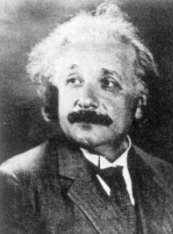


Why is this topic of importance to XMM?
It is the magnetic field aspect of this topic which is most directly of significance to XMM because magnetic fields play an important role in the production of photons. Such photons arise because of the force, and hence acceleration, which is exerted on any charged particle which is moving in a magnetic field (see Forces on Moving Charges). Magnetic fields permeate the Universe and because they act as the midwife for photons, by looking at such photons we can explore the Universe. XMM can detect these photons. Such magnetic fields exist on the (relatively) very small scale such as those associated with compact objects such as neutron stars; on the small scale as in the chromospheres and coronae of stars, on the larger scale in supernovae and their remnants and on the very large scale associated with galaxies.
![]()
What is a force?
IMAGE - Various Cosmological Objects.
Please click on this image to view more cosmological objects.
We are all aware of what forces are; we experience and feel them daily. Our weight is a force which is always directed downwards; when we fly in an aircraft or travel on a boat we are subject to forces in all directions. We experience these forces because our bodies possess the property of mass (not to be confused with weight).
In physical terms, a force is that which can cause a mass to accelerate and is defined by the expression:

Here the mass is the inertial mass.
It is important to recognise that the force produces the acceleration rather than the acceleration which produces the force. We will discuss what produces forces later.
If a force is balanced by some other force then no movement occurs. Acceleration will only result if there is a net force on an object. See also elsewhere.
A force has a magnitude and a direction, that is to say it can be represented by a vector quantity.
Because acceleration is the rate of change of velocity (v), and velocity is the rate of change of distance (x) we can see that:

And since mass is a parameter not dependent on t we see that:

that is to say, forces are also associated with rates of change of momentum.
![]()
What is a field?
A field is simply a region of space in which forces exist, whatever those forces may be. The strength of the field or simply field strength, at a point in the field is the magnitude of the force at that point. Clearly field strength is also a vector quantity. The magnitude and direction of the field can be determined by the force exerted on a test particle placed at the point. We shall discuss what we mean by a test particle shortly.
![]()
What is pressure?
In our everyday language we talk about being "under pressure" or being "stressed" and these are synonymous with force. "Pressure at work " implies being forced to work under a time schedule, or with someone we don't like.
In physics we use the word more precisely. For example we talk about atmospheric pressure, or radiation pressure, or magnetic pressure or dynamic pressure though these have rather different generic origins. The physical definition of pressure is :
Pressure = force per unit area.
Hence when we talk about a field, we can also talk about the pressure exerted by the field, hence magnetic pressure for example.
But what about material things such as a gas?; this can produce a pressure. Particles such as the atoms of a gas can exert a pressure by virtue of collisions and the transfer of momentum. In an elastic collision between a fast atom and a slow atom the fast atom is decelerated and the slow atom is accelerated. They both have mass so momentum is transferred. Since pressure is exerted over an area, the magnitude of the gas pressure is therefore determined by the rate at which momentum is exchanged at that" surface" . We can clearly see therefore that it depends on the mass of the atoms, their velocity (temperature) and the number of particles per unit volume (since this together with the velocity determines the number striking the area in unit time). Hence :


IMAGE - An animation of a gas cylinder
Please move the mouse cursor over this image to begin animation
What is of interest here is what particular force is coming into play during the collision process.
![]()
What different kinds of forces are there?
In nature there are only four fundamental forces. These are gravitational, electromagnetic, the strong nuclear force and the weak nuclear force.
A good question is why four? It implies a choice has been made, since the simple fundamental numbers are 0,1 and infinity. Not so long ago physicists used to talk about the magnetic force but this has been unified into the electromagnetic force. One of the holy grails of modern physics is to combine the four forces into a single unified force (which may have been the case in the very early, very hot Big Bang Universe).
Einstein proposed a cosmological force (a sort of anti-gravity force) to explain why the Universe appeared to be steady. Later it was discovered that the Universe was expanding and, even though Einstein admitted to his "greatest mistake" astrophysicists are still looking for such a force though as yet it is undetected.

IMAGE - Picture of Albert Einstein
Einstein, one of the greatest thinkers of the 20th century, developed our understanding of gravity and the Universe. However, he believed the Universe was static (ie did not expand) and as a consequence invented a fictitious force.
Physicists also talk about centripetal and Coriolis forces but these are not forces in the same sense as the others. They are apparent in frames of reference which are accelerating (called non-inertial frames). Objects which rotate are accelerating and so such apparent forces are associated with rotating objects such as the Earth, or in systems that are orbiting.
For our purposes we need only consider the gravitational and the electromagnetic. These are called long range forces; they act over very large distances. The other two fundamental forces are short range.


